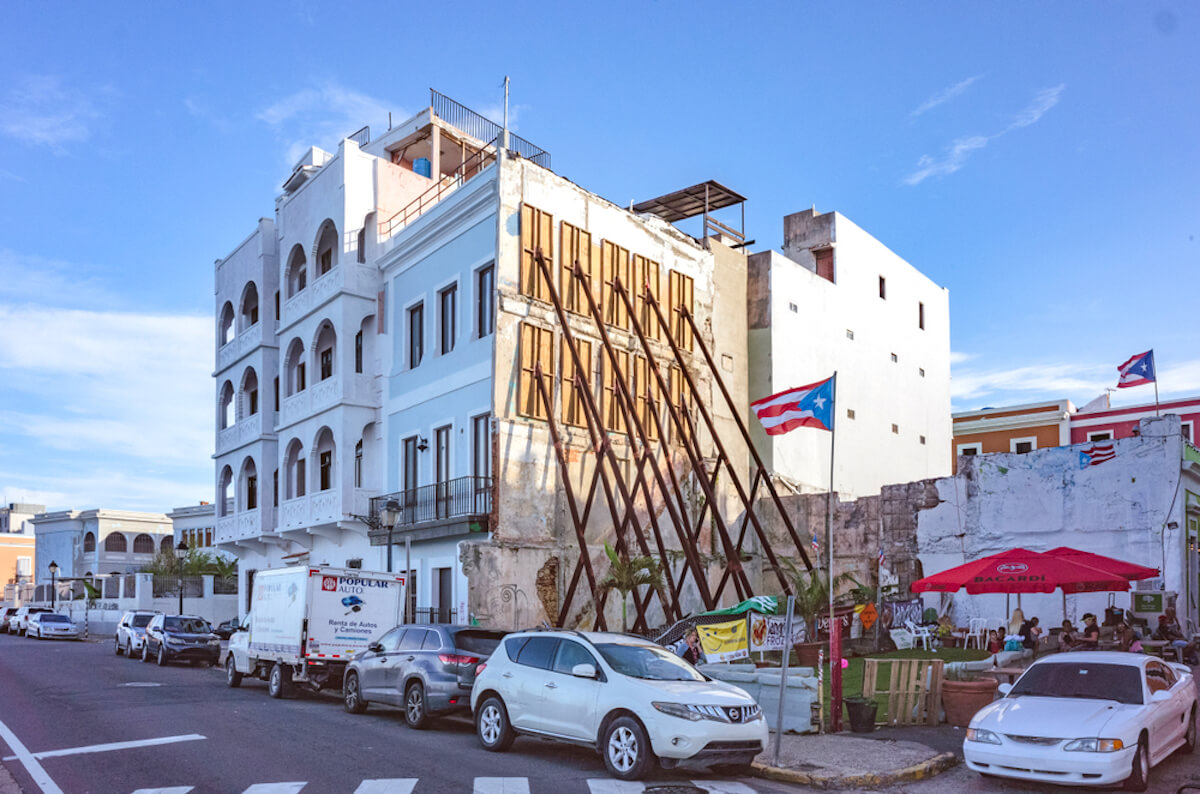‘Tis the season for our lookaheads to 2022 and, thanks to ImpactAlpha subscribers, we are able to make the roundups freely available. So give the gift of a link to ImpactAlpha’s industry-leading coverage of climate finance, impact in emerging markets, The Reconstruction and catalytic capital. You can find the whole set on our Looking Ahead to 2022 landing page.
ImpactAlpha, Dec. 22 – When ImpactAlpha asked subscribers last year to rank the areas where they wanted more coverage, “catalytic capital” topped the list.
After all, breakthrough business models, innovative finance and high-impact dealmaking are where impact investors really show their stuff. Catalytic investors are demonstrating how they are different from legacy investors or even “market-rate” impact investors who are content to stay in the shallow end of the pool. Equally important, they are showing how capital markets and finance itself can be different.
This year, we dove even deeper into the deals, people and strategies for using patient, risk-tolerant, concessionary and flexible capital.
As a high-impact market segment, ‘catalytic’ is now a badge of honor for family offices, corporations, public agencies, in addition to the philanthropic foundations that were early pioneers. ‘Catalytic capital’ is edging out disparaging terms such as ‘concessionary’ or ‘below-market.’ Having the flexibility to accept higher risks, lower returns or longer time horizons in order to jump into the deep end of social impact is increasingly seen as a privilege, not a burden.
Expanding the knowledge base
We like to think ImpactAlpha has contributed to that sea-change in understanding. Our Agents of Impact Call in May featured family-office leaders like Ceniarth’s Diane Isenberg, Regan Pritzker of the Libra and Kataly foundations and Sheri Sobrato Brisson of Sobrato Philanthropies called on other high-net-worth families to use their financial flexibility for good.
Our October Call unpacked catalytic strategies for bridging gaps in climate finance. We have rounded up more than 300 deals, signals and feature articles on our Catalytic Capital landing page.
Our partner (and sponsor) in the effort is the Catalytic Capital Consortium, or C3, a collaboration of the MacArthur and Rockefeller foundations and Omidyar Network. As part of the initiative, MacArthur has made nine investments from its $150 million mandate for demonstrations of catalytic capital, including in Ankur Capital’s fund for tech impact in India, Adjuvant Capital’s efforts to make late-stage medical research more accessible and affordable, and in One Acre Farms’ bundle of agricultural support for smallholder farmers in Africa.
In July, the Catalytic Capital consortium awarded grants to Toniic, Convergence, Mission Investors Exchange and the Global Impact Investing Network to share best practices in catalytic investing. In October, the consortium greenlit a dozen research projects to glean insights from practitioners who are deploying catalytic capital to bridge financing gaps for early-stage climate innovation, smallholder farmers, Indigenous entrepreneurs, employee ownership and other impact strategies.
“What we’re trying to do is to help the catalytic capital investors who have experience, and those that are looking to get into the game, have as much information as possible to be as smart as possible about how to make these choices, and how to calibrate their investments to make sure we’re being efficient and we’re being effective,” MacArthur Foundation’s Debra Schwartz told ImpactAlpha’s David Bank on an Agents of Impact podcast.
Go deeper:
- “MacArthur’s Debra Schwartz on catalytic capital, cost curves and contributing to solutions (podcast)”
- “Gathering evidence to put catalytic capital to its highest and best use”
- “Researchers ready a dozen-plus deep dives into the complexities of catalytic capital”
New catalytic investors
Impact-first capital has long been the domain of foundations, development financiers and governments. Now, wealthy families and corporations are exercising their flexibility to take higher risks, lower returns or a longer time-horizon in order to drive impact on social and environment issues they care about.
Unlike pension funds and asset managers who may be constrained by legacy notions of fiduciary duty in managing other people’s money, wealthy families and corporations have the discretion to take their returns in the form of positive impact and social innovation.
“We have no constraints – we’re rich,” Diane Isenberg, the principal of Ceniarth, said on a Agents of Impact Call No. 28. Isenberg is shifting family-office assets of approximately $400 million out of “market-rate” impact vehicles and into “impact-first capital preservation” strategies in smallholder agriculture, community development and other areas. “We’re delighted that we are able to have the flexibility to maximize impact to a sector or geography or community where there’s a dearth of it,” she says.
Other impact-first family offices include the Berwind family’s Spring Point Partners in Philadelphia, Chris Larsen’s and Doug Galen’s Rippleworks in Redwood City, Calif., and the Kaplan family’s A to Z Impact in Wilmington, Del.
Corporates such as PayPal, Aflac, Costco, DICK’s Sporting Goods, HubSpot, Netflix and Square emerged in the wake of the murder of George Floyd and racial justice protests as a new source of catalytic capital for community investment. Corporate buyers like American Airlines, ArcelorMittal, General Motors and Microsoft have committed to help drive down the cost of climate technologies with demonstration projects and advance purchase commitments.
The new corporate catalytic investors join community-investing pioneers like Prudential Financial, which has built a $1 billion impact investing portfolio; Goldman Sachs Urban Investment Group, which deploys more than $1 billion annually in community investments; and UnitedHealth Group, which has reached $500 million in new affordable housing investments.
Structures of the commitments have varied from cash deposits to bond issuances to fund anchors. Advocates have urged corporates to go beyond deposits to offer equity investments and grants to strengthen the capital structures of the CDFIs themselves.
The corporate strategies have tended to be conservative, suggesting little appetite for risk, according to Impact in Place, a report from the U.S. Impact Investing Alliance. There remains “significant demand for investors to take bold and early bets to send a positive signal to the rest of the market, and for investors to take increasingly riskier positions in the capital structure.”
Go deeper:
- “Call No. 28: For these wealthy families, deploying catalytic capital for impact is a privilege and responsibility”
- “Corporates emerge as new source of capital for community investment”
Bridging capital gaps for climate
Investors poured record sums into climate funds and startups in 2021. Yet significant gaps remain in key geographies, sectors and stages. And climate finance writ large is still measured in the billions, not the trillions required to avert climate catastrophe. Catalytic investors are deploying blended capital, guaranteed offtake agreements and targeted project financing to help fill gaps.
“It’s really easy to get overwhelmed by the magnitude of the challenge that we’re facing, especially when we look at the trillions that are required here,” said John Balbach of the MacArthur Foundation on ImpactAlpha’s Agents of Impact Call No. 33, which gathered some of the bottom-up innovators who are bridging capital gaps, propelling climate solutions and accelerating the transition to a net zero economy.
Such “bottom-up” solutions from innovative leaders are addressing persistent climate capital gaps. “That’s ultimately how we mobilize real capital,” Balbach says.
MacArthur is an investor in the $52 million Prime Impact Fund, which takes in mostly program-related investments from its funding partners and invests in startups that are considered too early or risky for commercial investors. Case in point: Prime led a 2018 seed round for Lilac Solutions, which is developing an environmentally friendly approach to extracting lithium, an essential element in electric vehicle batteries. The startup went on to raise a $20 million round led by Breakthrough Energy Ventures, and then $150 million in a round led by Lower Carbon Capital and T. Rowe Price.
Go deeper:
- “Using catalytic capital to fill climate finance gaps from the bottom up”
- “Deploying catalytic capital to bridge financing gaps for climate action”
- “Offtakes, guarantees and blended finance: A lexicon of catalytic climate capital”
Catalytic capital on the move
After years of testing structures and demonstrating proof points, catalytic investors are moving larger amounts of capital to close more types of capital gaps. From impact bonds for women and refugees to funds to blended finance mechanisms for next-gen climate tech, catalytic capital is rewriting rules for risk and return across undercapitalized markets.
In efforts to reduce food waste, for example, “There is an important and crucial role for catalytic capital to de-risk solutions, accelerate innovation, and unlock traditional forms of capital needed for widespread solution adoption,” says Jesse Fink, founder of ReFED, the national food waste nonprofit.
Among the catalytic deals on ImpactAlpha:
Impact in emerging markets. MacArthur Foundation backs Ankur Capital fund for tech impact in India… How Lendable parses risks and returns to mobilize capital for inclusive fintech in emerging… Global Partnerships raises $45.5 million impact-first debt fund for the COVID economic recovery… Refugee bond attracts $14 million to support displaced people in Jordan and Lebanon… Women’s Livelihood Bond from Impact Investment Exchange closes at $30 million.
Racial justice. LISC closes $250 million Black Economic Development Fund to catalyze capital for racial equity… Opportunity Finance Network’s Finance Justice Fund secures $23 million… Packard Foundation commits $25 million to address racial disparities in credit… Impact investors turn to revenue-based financing to bridge capital gaps for founders of color.
Investing in place. Guarantee from Kresge Foundation catalyzes $30 million for Memphis fund… Navajo Power secures $9.5 million to provide clean electricity for Navajo Nation… Opportunity Alabama is combining community and capital to fulfill the potential of Opportunity Zones.
Climate action. Breakthrough Energy planning “blended finance” fund to marshal billions for next-gen climate tech… Climate Fund Managers raises $675 million for green blended finance fund… Evergrow raises $7 million to provide offtake and funding for carbon reduction projects… Energy Access Relief Fund attracts $68 million from public and private investors.
Smallholder farmers. Aceli Africa raises $27 million to boost lending to agribusinesses in East Africa… A little incentive goes a long way to change lending for small farmers in Latin America.
Go deeper:
- “How Lendable parses risks and returns to mobilize capital for inclusive fintech in emerging“
- “Impact investors turn to revenue-based financing to bridge capital gaps for founders of color“
- “A little incentive goes a long way to change lending for small farmers in Latin America”
Proving the case
For all of the impact and innovation, catalytic capital was overwhelmed by market forces in perhaps its biggest test: the fair and equitable global distribution of vaccines to stem the COVID-19 pandemic.
Legal agreements between the Bill and Melinda Gates Foundation and private biotechnology companies, struck as part of grants and impact investments, were supposed to be the great equalizer between rich and poor countries. The Global Access Agreements require recipients of Gates Foundation funding to provide low-income countries with affordable access to drugs, vaccines and other health innovations.
The Gates Foundation provided funding to most of the companies that jumped into the race to deliver a vaccine for COVID- 19, including a large equity investment in BioNTech and grants to Moderna. It is also a major backer of the Coalition for Epidemic Preparedness Innovations, or CEPI, which has provided funding to at least nine vaccine efforts.
But because the foundation’s investments were made prior to COVID-19, the agreements “do not cover COVID-19 infection as a target condition,” according to a foundation spokesperson. That hampered the efforts of COVAX, the Gates-backed U.N. buyers’ club, to secure vaccine doses for the 91 low- and middle-income countries that qualify for foreign aid, or official development assistance. Less than 1% of all vaccine doses have been administered in low-income countries.
All told, blended finance that leverages public or philanthropic capital to increase private investment in sustainable development has unlocked about $160 billion for sustainable and impact investments since 2010, according to “The State of Blended Finance 2021,” from Convergence. That’s not nearly enough to bridge a multi-trillion gap in financing the 2030 Sustainable Development Goals and avert a climate catastrophe.
“The field is nowhere at the scale it needs to be,” Convergence’s Joan Larrea said on ImpactAlpha’s Call No. 33. In a guest post, Larrea took on five critiques of blended finance, including that it doesn’t address the needs of low-income countries and that there is no proof of effectiveness or impact.
And the need for mechanisms to crowd in private capital is only growing, as the tabs for climate action, sustainable development and ‘social infrastructure’ far outstrip government budgets. Nick Hurd, the former U.K. minister who heads the G7’s Impact Taskforce, says he tells global leaders, “There was a funding gap before COVID documented around the SDGs, and that gap has widened significantly since.”
“So this question of how we mobilize the markets and the private sector at scale for public good, to be a more visible and effective force in helping to find solutions for the social and environmental challenges in front of us, has become more politically relevant than I have ever known it.”
Go deeper:











